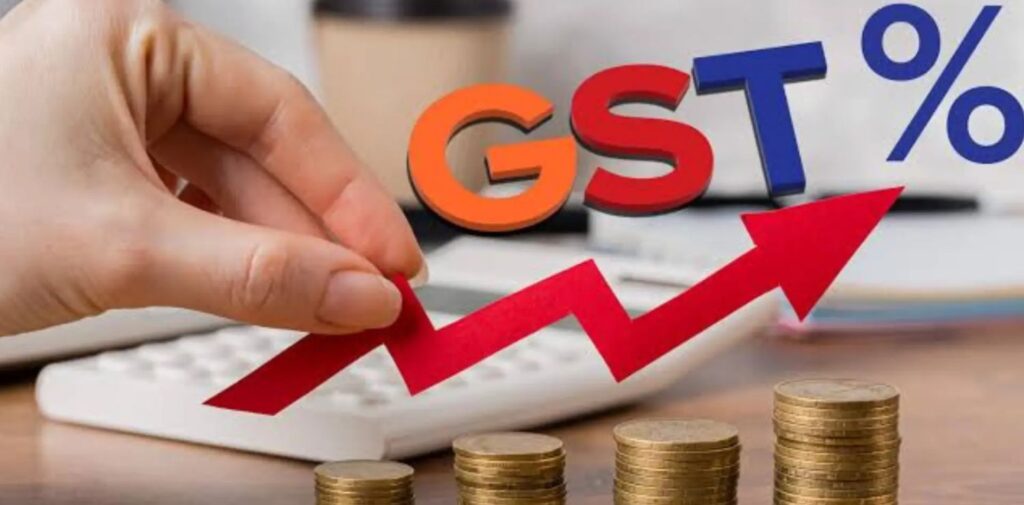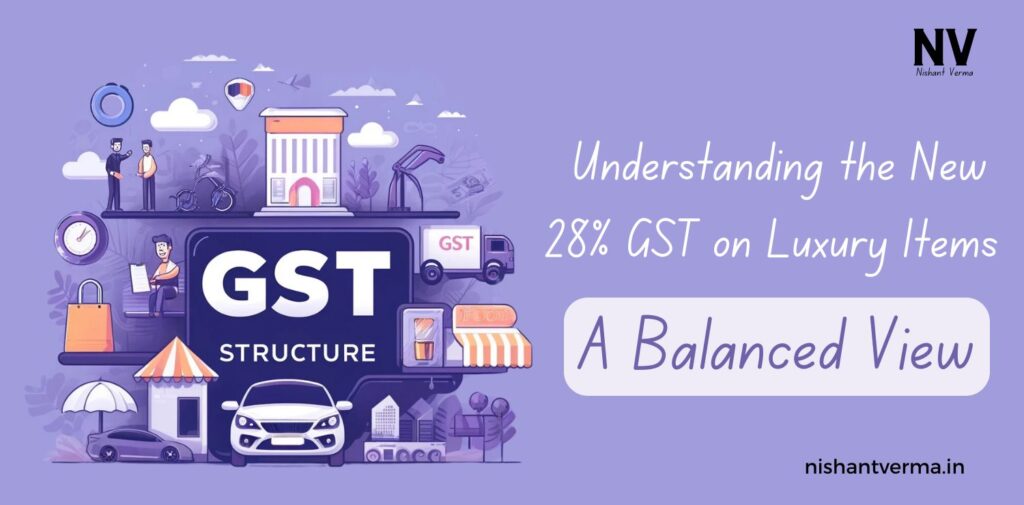The Goods and Services Tax (GST) regime in India has seen several changes since its inception, aiming to create a more streamlined taxation system. Recently, the government has proposed raising the GST rate for certain luxury items, specifically apparel and shoes priced above ₹15,000 and wristwatches above ₹25,000, to a hefty 28%. This move is stirring significant debate across the country, with opinions divided on its potential impact. In this article, we will explore both sides of the argument, providing a balanced perspective on whether this decision is a good or poor one for India.
The Rationale Behind Increasing GST on luxury items
Boosting Government Revenue
One of the primary reasons for increasing the GST on luxury items is to enhance government revenue. Luxury goods, by their very nature, cater to a smaller segment of the population—those with higher disposable incomes. By imposing a higher tax rate on these items, the government aims to tap into this wealth, providing additional funds for essential public services. This could include better infrastructure, improved healthcare, and enhanced educational facilities. For a developing nation like India, every additional rupee in revenue can make a difference in funding programs that benefit the broader population.

Equity in Taxation
Another argument in favor of this tax increase is rooted in the principle of equity. Many proponents believe that wealthier individuals should contribute more to the nation’s finances. If luxury items are taxed at a higher rate, it is seen as a fair way to ensure that those who can afford to indulge in luxury contribute proportionately to the welfare of society. This idea aligns with progressive taxation principles, where the tax burden increases with income levels.
The Counterarguments: Consumer Burden and Market Impact
Increased Prices for Consumers
However, increasing the GST on luxury goods is not without its drawbacks. One of the most immediate effects of this tax hike will be a significant increase in retail prices for consumers. Luxury apparel, shoes, and watches will become even more expensive, potentially limiting access to these products for many buyers. This could deter consumers from purchasing luxury items, leading to a decrease in sales for brands that specialize in high-end products.
Many consumers view luxury goods as rewards for hard work and achievement. By increasing taxes on these items, the government may inadvertently discourage spending in this segment of the market. If buyers perceive that they are being unfairly taxed for their success, it could dampen their enthusiasm for luxury purchases, leading to a decline in overall market activity.
Impact on Businesses and Employment
The implications of this tax hike extend beyond just consumer prices. Businesses that rely on the sale of luxury items may face declining sales, which can have a ripple effect throughout the economy. Retailers, manufacturers, and supply chains could all be adversely affected, potentially leading to job losses in sectors that thrive on luxury sales. In a country where unemployment is already a pressing issue, this could exacerbate existing economic challenges.
Consumer Choice and Economic Behavior
Another consideration is the potential shift in consumer behavior. When luxury items become more expensive, buyers may start to seek more affordable alternatives or shift their spending to other sectors. This could lead to an overall decline in sales for luxury brands, forcing them to reconsider their pricing strategies or even scale back their operations.
Moreover, the luxury market is not just about selling products; it’s also about creating experiences and brand loyalty. Higher prices could alienate some customers, leading them to opt for brands that are more accessible. This shift could disrupt established luxury brands and reshape the competitive landscape.

The Bigger Picture: Social Equity and Economic Growth
The discussion around luxury taxes is also closely tied to broader questions about social equity. While higher taxes on luxury items might generate additional revenue, it’s crucial to consider whether this approach is the most effective way to address the pressing issues faced by the majority of the population. Many people in India still struggle with basic needs like food, housing, and healthcare. Is it justifiable to impose higher taxes on luxury goods while many citizens are still grappling with poverty?
Additionally, while taxing luxury items may provide short-term revenue, it’s important to evaluate the long-term economic implications. Will this tax strategy ultimately promote or hinder economic growth? By placing additional financial burdens on luxury consumers, the government risks stifling an important segment of the economy that contributes to job creation and innovation.
International Perspectives: Learning from Global Examples
Looking beyond India, various countries have adopted different approaches to taxing luxury goods. For instance, in some European nations, luxury items are subjected to higher VAT rates, with the intent of generating additional revenue for social programs. However, the effectiveness of such measures varies. In some cases, consumers have shifted their spending habits, resulting in reduced sales for luxury brands and, paradoxically, lower tax revenues.
In contrast, countries that have chosen not to impose high taxes on luxury goods often encourage consumer spending, which can stimulate economic growth. This raises an important question: Is the goal of increasing tax revenue worth the potential consequences on consumer behavior and economic vitality?
The Role of Consumer Sentiment
Consumer sentiment plays a significant role in how luxury brands perform in the market. A tax increase could lead to negative feelings toward the government and potentially even luxury brands themselves. If consumers feel that they are being penalized for their success, it could generate resentment, ultimately affecting brand loyalty and sales.
Moreover, luxury brands thrive on the perception of exclusivity and desirability. If higher prices due to increased GST lead to a decline in consumer interest, brands may struggle to maintain their image. The emotional connection that consumers have with luxury goods can be fragile, and changes in pricing structures can significantly impact that relationship.

A Balanced Perspective: Your Opinion Matters
As we navigate through these complex issues, it’s important to recognize that there are valid arguments on both sides of the debate regarding the proposed increase in GST on luxury items. The government’s intent to boost revenue and ensure equitable taxation is commendable. However, the potential consequences for consumers and businesses cannot be overlooked.
Ultimately, the decision will impact various stakeholders—from consumers and retailers to the broader economy. It’s crucial for the government to carefully consider these factors before implementing such changes.
Share Your Thoughts!
What do you think about the proposed increase in GST on luxury items? Is it a wise move for the government, or does it unfairly burden consumers? Do you see potential benefits in terms of increased revenue, or do you believe it will harm the luxury market? We invite you to share your thoughts in the comments below! Your opinion matters as we collectively explore the implications of this significant decision.




